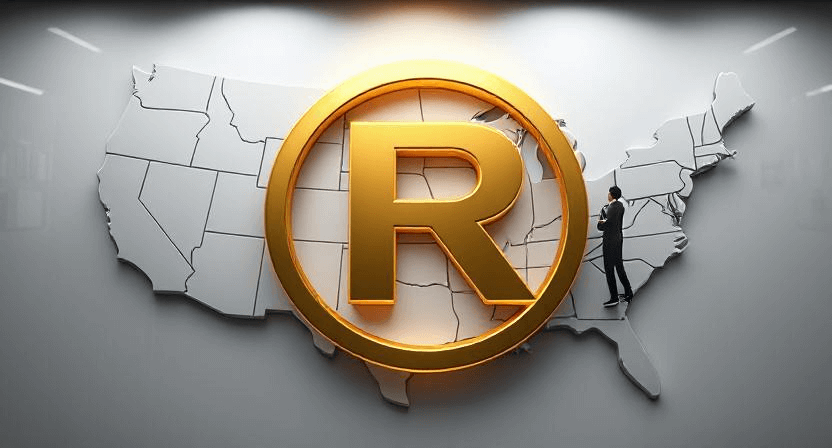Recent USPTO Policy Trends: Promoting Innovation and Adapting to Technological Change
 In recent years, the United States Patent and Trademark Office (USPTO) has continually updated its policy framework in response to technological innovation, global competition, and public interest. These updates aim to address emerging tech challenges, promote fair competition, and support the growth of small and medium-sized enterprises (SMEs). This article outlines the core directions of recent USPTO policy developments and their potential impacts.
In recent years, the United States Patent and Trademark Office (USPTO) has continually updated its policy framework in response to technological innovation, global competition, and public interest. These updates aim to address emerging tech challenges, promote fair competition, and support the growth of small and medium-sized enterprises (SMEs). This article outlines the core directions of recent USPTO policy developments and their potential impacts.
1. Deep Integration of Artificial Intelligence in Patent Examination
With the rapid rise of generative artificial intelligence (AI), the USPTO has been actively exploring the use of AI tools in the patent examination process. In 2023, the USPTO launched a pilot program that utilizes AI algorithms to assist examiners in identifying prior art more efficiently, thereby reducing patent search times. While this move aims to address application backlogs, it has also sparked discussions around algorithm transparency and consistency in examination standards.
Policy Highlights:
-
Use of AI Examination Tools: Natural language processing (NLP) technologies are being applied to enhance patent search efficiency and reduce manual workload.
-
Patentability of AI-Generated Inventions: USPTO policy clearly states that only human inventors can be listed in patent applications. AI can serve as a tool, but cannot be the sole inventor, to avoid legal issues around "non-human invention."
-
Data Privacy and Ethical Norms: Any sensitive technological data involved in AI-assisted examination must comply with federal security standards to prevent information leaks.
Challenges:
AI tools may produce incomplete search results due to biases in training data, necessitating the creation of dynamic audit mechanisms to ensure fairness.
2. Strengthening Support for Small Businesses and Independent Inventors
As part of the Biden administration’s “Build Back Better” agenda, the USPTO has introduced a range of measures aimed at lowering the innovation barrier for small businesses:
-
Fee Reduction Program: SMEs with annual revenues under $1.5 million are eligible for reductions in patent application and maintenance fees.
-
Simplified Application Process: The “Pro Se 2.0” pilot provides online tools and guidance for non-professional applicants filing without legal counsel.
-
Expanded Patent Prosecution Highway (PPH): Collaboration with patent offices in Japan, South Korea, and others helps SMEs expedite global patent applications.
Goal:
Break down resource barriers and foster diversity within the innovation ecosystem. According to USPTO data, SME patent applications rose 12% year-on-year in 2023, reflecting initial policy success.
3. Addressing Global Tech Competition and Standards Coordination
In the context of U.S.-China technological rivalry and Europe’s Digital Markets Act, the USPTO is ramping up international collaboration to preserve America’s competitive edge:
-
Priority Examination for Key Technologies: Areas like semiconductors, quantum computing, and clean energy are classified as “national strategic priorities,” reducing examination time by 30%.
-
Standard-Essential Patents (SEP) Oversight: Together with the Department of Justice (DOJ), the USPTO released SEP licensing guidelines to prevent abuse and anti-competitive practices.
-
Global Patent Harmonization Initiatives: The USPTO promotes mutual recognition of patents with the EU and WIPO to lower cross-border IP costs for businesses.
Controversy:
Priority review of strategic technologies may divert resources from other sectors, requiring careful balance between public interest and commercial needs.
4. Improving Patent Quality and Combating Abuse
To curb litigation abuse by “patent trolls,” the USPTO has taken a tougher stance on low-quality patents:
-
Stricter Examination Standards: Particularly in software and business method patents, the office has reinforced the use of the Alice/Mayo test to assess patent eligibility.
-
Post-Grant Opposition Mechanisms: Expanded Inter Partes Review (IPR) and Post-Grant Review (PGR) options allow third parties to challenge problematic patents more easily.
-
Ownership Transparency: Publicly disclosing patent ownership helps prevent shell companies from filing speculative lawsuits.
Impact and Debate:
Between 2022 and 2023, software patent grant rates fell by 8%. However, some tech companies argue that the standards are now too strict and could suppress genuine innovation.
5. Incentive Policies for Green Technology Patents
In support of the U.S. carbon neutrality goals, the USPTO launched the “Green Tech Fast Track” program to accelerate examination—within six months—for patents in renewable energy, carbon capture, and related fields. Additionally, a special fund has been established in collaboration with the Department of Energy to support the commercialization of sustainable technologies from universities and startups.
Challenge:
Clearly defining what qualifies as "green technology" is essential to prevent companies from misusing the fast-track system for unrelated inventions.
Future Outlook: Balancing Innovation and Public Interest
The USPTO's evolving policy landscape reflects its balancing act between technological transformation, economic competition, and social responsibility. Moving forward, the agency is likely to focus on:
-
Clarifying AI-Related Patent Policy: Establishing definitive rules for human-AI collaborative inventions.
-
Global Patent Dispute Resolution: Building an international platform for resolving cross-border IP disputes.
-
Open Science Movement: Exploring ways to align patent data sharing with open-source innovation models.
For companies and inventors, staying informed on policy developments and adjusting their IP strategies accordingly will be key. Active participation in USPTO public consultations can also help shape a more inclusive innovation ecosystem.
The USPTO’s policy reforms are not just legal updates—they are strategic moves to maintain U.S. leadership in the global innovation race. In an era of rapid technological change, only through institutional innovation can the foundation for the next industrial revolution be laid.
Share this page
